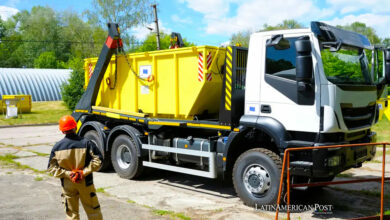The favelas in Rio de Janeiro: where violence is normal
Rio de Janeiro is one of the Latin American cities where social inequality is more than evident

Copacabana, Rio de Janeiro, is one of the most famous neighborhoods in the world and of course one of the most popular. Only a few streets away are the entrances to the hills, where the communities or favelas are located, neighborhoods located in the mountains that surround the city.
Leer en español: Las favelas en Río de Janeiro: donde la violencia es pan de cada día
Here live social groups, mostly of lower class and in a minimum percentage of middle class. They are popular neighborhoods that in most situations present some kind of confrontations between drug cartels or factions.
There are some "pacified", due to some efforts developed by the city government, which some years ago initiated a series of projects focused on stopping violence, according to the Inter-American Development Bank. The "pacified" have less confrontations than others, where even the bloody war is lived day by day.
Those located in the south are considered much more peaceful and quiet than those in the north, where the climate rises, as analyzed. The laws of the favela are very clear, no one can assault, steal or mistreat the inhabitants of the community.
But how do the people who inhabit the communities live? Accustomed without doubt to their reality, with fear, but with a fear that has been naturalizing since they have memory.
Those who live in the favela should get used to seeing armed men, perhaps at the door of their house, adjust to the sale of drugs in some streets, listen to one or several shots from time to time. This is how life is described, in what is interpreted in an article in El País of Uruguay that talks, among other things, about what life is like in the favelas.
You may be interested: Colombia: Where is FARC's money?
What consequences does naturalization bring?
Much of the society located in the favelas never had the option of living in a place away from bullets and hatred. It is understandable when your country lives situations of poverty. According to a publication by El Clarín of Argentina, "in the first half of last year, 28,200 people were killed, about 27.2 violent deaths per 100 thousand inhabitants."
But even with this panorama, why do some foreigners choose to live in the favelas? Why are the favelas so attractive to tourists despite the danger? A main reason could be that there the low prices, the economic public services and the proximity with some beaches attracts attention. Many tourists look for in Brazil to live the experience of going up to a favela and seeing a scene of "City of God" live.
This can be understood as sensationalist, morbid or simple desire to know a little more about the local life. Some have classified it as fashion, others link this social phenomenon with the economic crisis experienced in the country, so it becomes a complicated scenario for the young foreigner who will experiment and look for employment opportunities. In most cases in the tourism industry.
The real and completely true is that armed confrontations will continue to be presented, where the least favored are those who, as always, bear the brunt of it. Suffering the injustices of a state that forgot them and a society that naturalized violence.
LatinAmerican Post | Sandra Caicedo
Translated from "Las favelas en Río de Janeiro: donde la violencia es pan de cada día"
* The opinion of the editor does not represent the average
Listen this article





